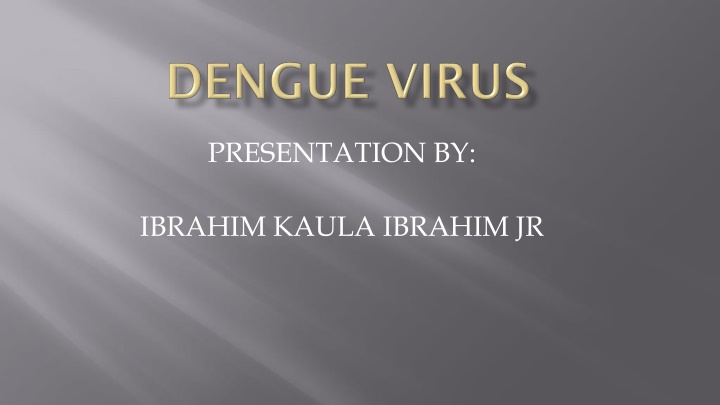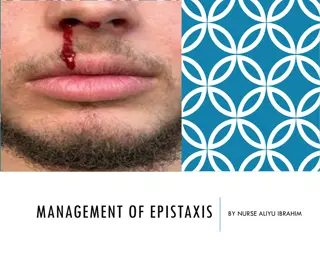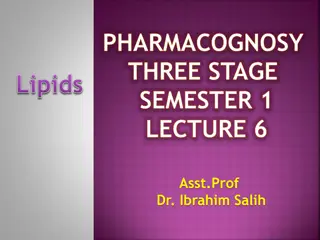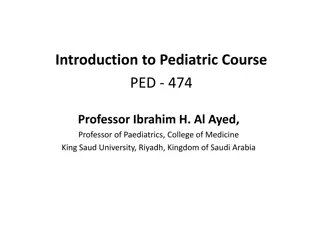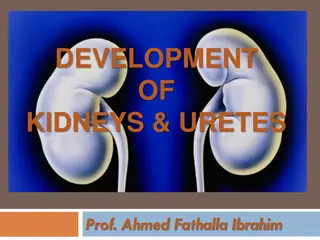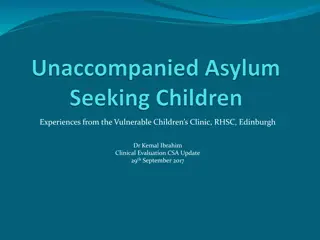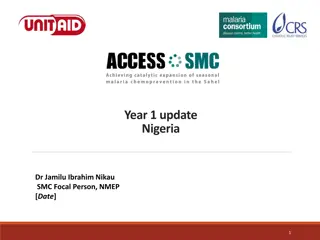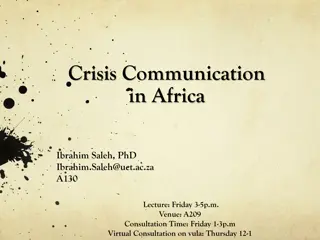PRESENTATION BY: IBRAHIM KAULA IBRAHIM JR
Dengue fever is caused by the dengue virus, a mosquito-borne RNA virus that infects humans mainly in tropical and subtropical regions. The virus is transmitted through the bite of infected mosquitoes. People of all ages can get dengue fever, with symptoms including severe headache, joint pain, and a characteristic rash. The disease is not contagious between humans. The dengue virus belongs to the flavivirus genus and is classified as group IV(+ssRNA), with specific proteins involved in its replication and assembly process.
Download Presentation

Please find below an Image/Link to download the presentation.
The content on the website is provided AS IS for your information and personal use only. It may not be sold, licensed, or shared on other websites without obtaining consent from the author.If you encounter any issues during the download, it is possible that the publisher has removed the file from their server.
You are allowed to download the files provided on this website for personal or commercial use, subject to the condition that they are used lawfully. All files are the property of their respective owners.
The content on the website is provided AS IS for your information and personal use only. It may not be sold, licensed, or shared on other websites without obtaining consent from the author.
E N D
Presentation Transcript
PRESENTATION BY: IBRAHIM KAULA IBRAHIM JR
Dengue virus is the cause of dengue fever. It is a mosquito-borne single positive stranded RNA virus of the family flaviviridae, and the genus flavivirus.
Dengue is found in tropical and sub tropical climates worldwide, mostly in urban and semi urban areas. People of all ages who are exposed to infected mosquitoes can get the dengue fever. The disease occurs most often during the rainy season in areas with high number of infected mosquito Only infected mosquitoes transmits the virus. The virus is transmitted to human through the bite of an infected female mosquito. The incubation period is 3-14 days and the period of illness is 3-7 days.
Dengue virus is classified under the group IV(+ssRNA). Family: flaviviridae Genus: flavivirus Species: dengue virus
Dengue virus envelope protein binds to a cellular receptor. Dengue virus then undergoes endocytosis. Uncoating occurs in the cytoplasm. Host translational machinery(ribosomes) translates the (+)ssRNA into a single polypeptide
Cellular and viral proteinases cleave the polypeptide into 10 proteins (E, M, C and 7 non- structural/enzymatic proteins) while embedded on the ER membrane. After RNA synthesis, RNA replication then occurs Assembly occurs on intracellular membranes which bud into the ER therefore giving it room for maturation. Egress occurs via exocytosis.
The disease manifests as a sudden onset of severe headache, chills, pain upon moving the eyes, and low backache. Painful aching in the legs and joints occurs during the first hours of illness. The temperature rises quickly as high as 40 C, with relative low heart rate (bradycardia) and low blood pressure (hypotension). The dengue rash is characteristically bright red petechiae and usually appears first on the lower limbs and the chest . The glands (lymph nodes) in the neck and groin are often swollen. In some patients, it spreads to cover most of the body.
There may also be gastritis with some combination of associated abdominal pain, nausea, vomiting, or diarrhea. Some cases develop much milder symptoms which can be misdiagnosed as influenza, chikungunya, or other viral infection when no rash is present. The classic dengue fever lasts about six to seven days, with a smaller peak of fever at the trailing end of the disease. Clinically, the platelet count will drop until the patient's temperature is normal.
- Sudden onset of high fever - Severe headache (mostly in the forehead) - Pain behind the eyes which worsens with eye movement - Body aches and joint pains - Nausea or vomiting
People who suffer from dengue fever have no risk of death but some of them develop Dengue Hemorrhagic Fever (DHF) or Dengue Shock Syndrome (DSS). In some of these cases death can occur. If a clinical diagnosis is made early, a health care provider can effectively treat DHF using fluid replacement therapy. Adequately management of DHF generally requires hospitalization.
Aspirin, Brufen and non-steroidal anti- inflammatory drugs should be avoided as these drugs may worsen the bleeding tendency associated with some of these infections. Patients may receive paracetamol preparations to deal with these symptoms if dengue is suspected. Doctors should be very careful when prescribing medicines. Any medicines that decrease platelets should be avoided.
Traditional treatment is also used in tackling dengue fever, especially in Asia where the virus is tackled with the use of herbs on patients. In Philippines dengue patients use tawa-tawa herbs and sweet potato tops juice to increase the platelets counts and revived the patients. These are traditional treatments and are often not based on scientific medicine research.
There are no specific medications to treat dengue, and there is no vaccine commercially available against dengue. Therefore, prevention is the most important step to reduce the risk of dengue infection. There are several ways of prevention: Mosquito control by either larval control and adult mosquito control. Reduce mosquito bites, especially during daylight hours.
Dengue prevention through mosquito control and insect repellent
The spread of dengue fever can be prevented by: Personal actions to reduce contact with mosquitoes; people can reduce the risk of mosquitoes entering their homes by using windows and doors. Also, wearing of long pants and long sleeved shirts can reduce mosquito bites when spending time outdoors.
Chemical control of dengue mosquitoes; use of insecticides is recommended in situations during dengue virus epidemic. Biological method; fishes are introduced in a water body(ponds, and other large container habitats) to feed on the mosquito larvae.
